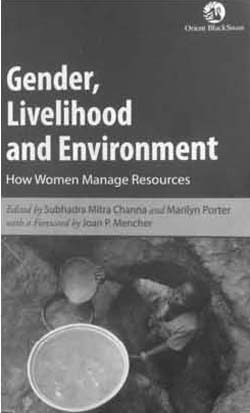The edited volume under review by anthropologist Subhadra Mitra Channa and sociologist Marilyn Porter focuses on a wide range of case studies from across the world related to ways in which women manage environmental resources. The book is a product of the International Union of Anthropological and Ethnological Sciences (IUAES) meeting held in China in 2009. The contributors to the volume show the connections between increasing poverty and global capitalist exploitation that negatively affects women’s access to resources. As recognized by the UN Security Council, since the 1990s, most conflicts around the world are related to disputes over natural resources, whether they are over oil, water, mining or access to land to grow crops. Women have played an important role in the peace processes.
The underlying theme in all the seven chapters points to the need to pay attention to gender in the management of natural resources in the present as well as the uncertain future. In the foreword to the volume, renowned anthropologist Joan P. Mencher points out that in the present uncertain climatic conditions, the relation between gender and natural resources needs to be focused on. She points to the need to understand the new ways in which women are adapting to lack of resources and learning to survive on less.
The ethnographic essays in the book range from women’s work in the pastoral communities in the Himalayan mountain environments to women’s natural resource management in eastern Kentucky, USA to coastal environments and fishing communities in Tanzania and other African fishing communities, to water management in Gujarat and issues of Global Apartheid and women’s activism for sustainable development and well being. The introductory essay by Channa and Porter sets the context for the book by highlighting the fact that the growth and spread of global capitalism has made the earth and its resources vulnerable and put it at risk. Degradation of the environment affects women the most since gender is one of the most pervasive of inequalities and women are the most disadvantaged of the disadvantaged groups.

